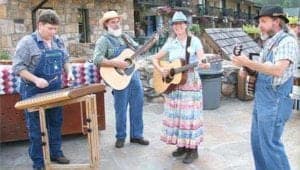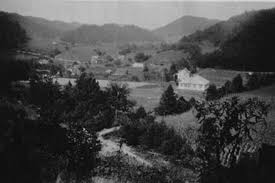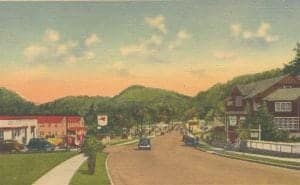ABOUT THE HISTORY OF GATLINBURG, TENNESSEE.
Gatlinburg History
How much do you know about the history of Gatlinburg? Find out all the details of how Gatlinburg got its start.
 Gatlinburg was originally settled in the early 1800s. Its first name was White Oaks Flats, due to the large numbers of white oak trees in the area. The first settler may have well been Martha Jane Huskey Ogle, a widow who came with her family to start a new life here. Other area familiar family names began to join her here, including ones like Reagan, McCarter, Whaley and Trentham.
Gatlinburg was originally settled in the early 1800s. Its first name was White Oaks Flats, due to the large numbers of white oak trees in the area. The first settler may have well been Martha Jane Huskey Ogle, a widow who came with her family to start a new life here. Other area familiar family names began to join her here, including ones like Reagan, McCarter, Whaley and Trentham.
The city received its current name from Radford Gatlin, owner of the second general store to serve the area, which also hosted the town’s post office. Though he left the town under, well, let’s say somewhat stressful circumstances, townspeople continue to use his namesake today.
The first years in this frontier paradise were difficult for sure, but mountain folk are a tough breed. When war broke out between the states, most families in the area remained neutral suffering raids from the armies of both sides.
 Education came to the village in the form of subscription schools in the early 1800’s. Gatlinburg’s first public school was created by the Pi Beta Phi Fraternity in 1912. It met the needs of educating the young as well as helping rebirth a vibrant Appalachian culture in arts and crafts. Our city’s elementary/middle school still bears the name Pi Beta Phi. Out of this initial public education effort grew a summer craft workshops program that eventually became the Arrowmont School of Arts and Crafts, presently located in the heart of downtown with year-round classes and workshops.
Education came to the village in the form of subscription schools in the early 1800’s. Gatlinburg’s first public school was created by the Pi Beta Phi Fraternity in 1912. It met the needs of educating the young as well as helping rebirth a vibrant Appalachian culture in arts and crafts. Our city’s elementary/middle school still bears the name Pi Beta Phi. Out of this initial public education effort grew a summer craft workshops program that eventually became the Arrowmont School of Arts and Crafts, presently located in the heart of downtown with year-round classes and workshops.
Religion played an important role in the lives of the early settlers. Many of those first pioneers were Presbyterian, but the first church here was Baptist. A White Oak Flats branch of Sevierville Baptist Church most likely met at the location of the Ogle cabin. A second church was built around 1837 named White Oak Flats Baptist. Changing its name to First Baptist Church in 1932, the church built a stone church on the same site in 1951 and moved to its present location on Hwy. 321 in 1991. The congregation recently celebrated its 175th anniversary.
 During the years of the Depression the federal government created programs for employment that provided work for the people in this area. The Civilian Conservation Corp came to work in and around the area that would eventually become the Great Smoky Mountains National Park. These men built miles of hiking trails and structures to help establish a place where Americans would eventually come by the millions to celebrate the natural beauty and biodiversity of these majestic mountains.
During the years of the Depression the federal government created programs for employment that provided work for the people in this area. The Civilian Conservation Corp came to work in and around the area that would eventually become the Great Smoky Mountains National Park. These men built miles of hiking trails and structures to help establish a place where Americans would eventually come by the millions to celebrate the natural beauty and biodiversity of these majestic mountains.
It was a gradual process for Gatlinburg to become the tourist destination it is today. Cabins began to dot some of the by-ways and a few shops began to open through town. As time went by so many visitors came to the mountains that motels began to be built along the highway to accommodate them. Soon, a small hamlet grew to become a thriving mountain resort and now serves as the gateway to America’s most visited National Park.


